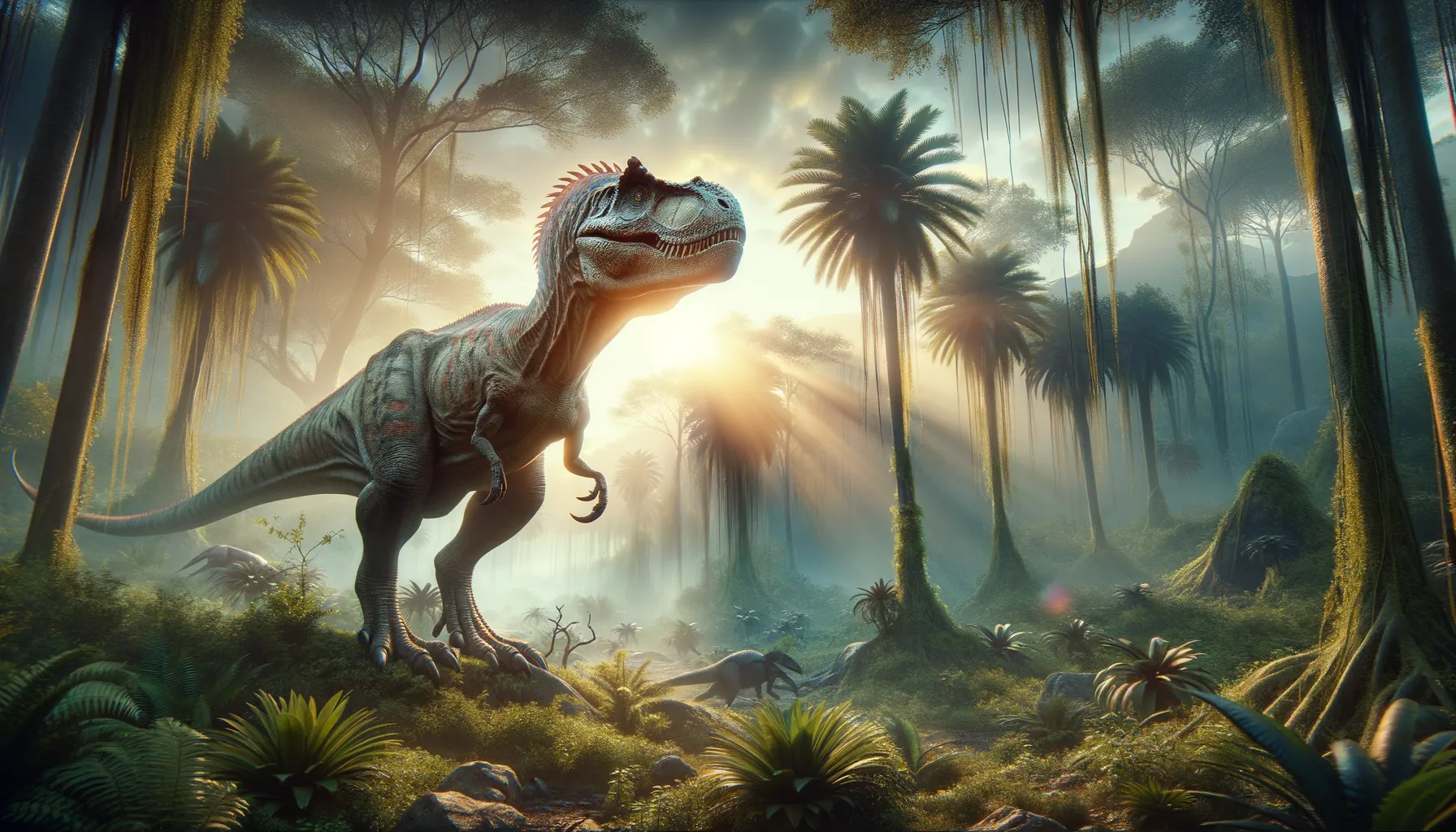
Chilantaisaurus
A predator from the Cretaceous world!
Period
Cretaceous
Length
About 11 meters long.
Height
Approximately 3 meters.
Weight
Around 2.5 tons.
Chilantaisaurus was a large theropod dinosaur that roamed the Earth during the Cretaceous period. Known for its formidable size and predatory nature, it thrived in a world filled with diverse flora and fauna. This dinosaur's fossils have provided crucial insights into the evolution and adaptation of theropods, showing a mix of traits that suggest it was both a fearsome predator and a competitive rival to other carnivorous dinosaurs of its time.
Diet
Chilantaisaurus was a carnivore, primarily feeding on smaller dinosaurs and perhaps scavenging from larger carcasses. Its sharp teeth and strong jaws suggest it was well equipped to hunt and consume flesh.
Hunting
Chilantaisaurus likely used its size and strength to overpower prey. It may have hunted alone, ambushing or chasing after herbivores in its habitat to capture meals.
Environmental challenges
Living during the Cretaceous period, Chilantaisaurus faced a dynamic environment with fluctuating climates and competition for resources. Extreme weather conditions, such as storms and droughts, may have affected its food availability. Additionally, it coexisted with various predators, possibly leading to frequent confrontations over prey and territory. Its adaptability in hunting techniques and dietary habits might have been crucial for surviving such challenges.
Speed
Moderate, capable of fast bursts when needed.
Lifespan
Estimated to live several decades in the wild.
First discovery
First discovered in China in 1964.
Fun Facts
- Chilantaisaurus was a large theropod dinosaur that lived around 92 million years ago during the Late Cretaceous period.
- This dinosaur was named after the region where its fossils were first discovered, in the Chilantai area of Inner Mongolia, China.
- Chilantaisaurus is believed to have been a carnivore, meaning it likely preyed on other dinosaurs or large animals of its time.
- The name 'Chilantaisaurus' translates to 'Chilantai lizard,' combining the location name with the Greek word for lizard, 'saurus.'
- While not as famous as its relatives like Tyrannosaurus rex, Chilantaisaurus was still an impressive predator, estimated to reach lengths of 10 meters or more.
- Fossils of Chilantaisaurus were first discovered in the early 1960s, adding valuable information to our understanding of theropod diversity.
- Chilantaisaurus had strong, powerful legs, suggesting it could run relatively fast for its size, an essential trait for hunting prey.
Growth and Development
Chilantaisaurus probably experienced rapid growth rates during its early years, reaching maturity relatively quickly. Fossil evidence suggests it had a robust skeletal structure, supporting a large body that continued to strengthen over time. Adaptations such as strong leg muscles would have developed as it aged, enhancing its hunting prowess.
Habitat
The habitat of Chilantaisaurus was likely composed of varied terrains, ranging from dense forests to open plains. It dwelt in regions with ample vegetation supporting a variety of prey, ensuring sufficient sustenance throughout the year. This environment would have been a rich ecosystem with ample opportunities for shelter and hunting.
Interaction with other species
As a top predator, Chilantaisaurus likely had few natural enemies, though it may have encountered other large carnivores. These interactions could lead to confrontations or the establishment of territorial boundaries. Herbivorous dinosaurs and smaller carnivores would have been common prey and competitors within its ecosystem.
Natural lifespan
Chilantaisaurus might have lived up to 30 years in the wild.
Reproduction
Chilantaisaurus reproduced by laying eggs in nests constructed in safe locations. Parental care for the young might have included protecting the nest and possibly watching over hatchlings until they could fend for themselves.
Social behaviour
Little is known about the social behavior of Chilantaisaurus, but like many theropods, it might have been a solitary hunter. However, there is potential for certain social interactions, such as mating rituals or temporary groupings during plentiful feeding opportunities.
Fossil locations
Fossil remains of Chilantaisaurus have been mainly discovered in China, providing key insights into its characteristics and lifestyle. These discoveries have been pivotal in understanding the diversity of theropod dinosaurs during the Cretaceous period.
